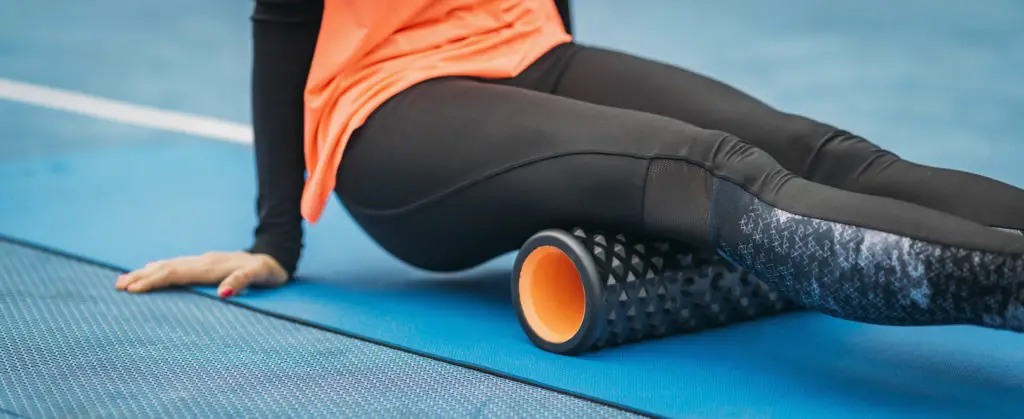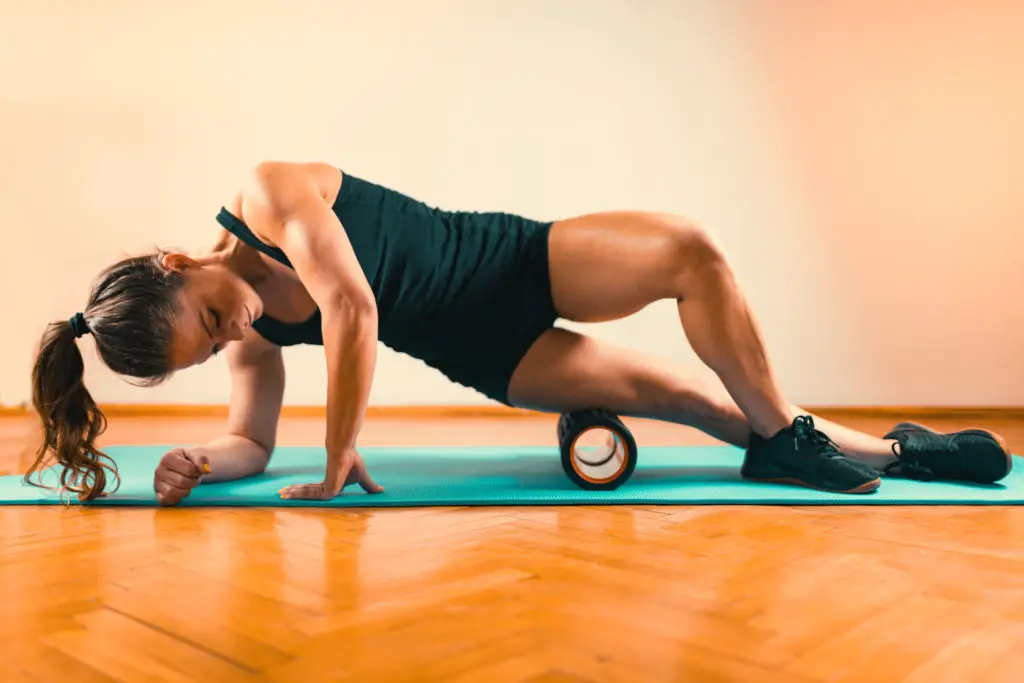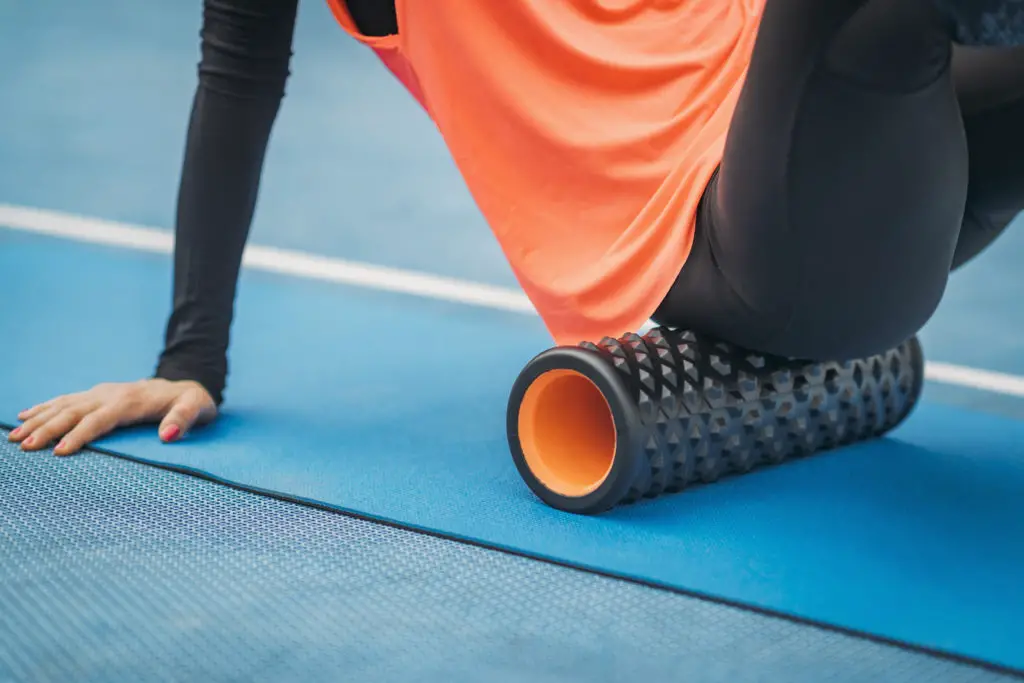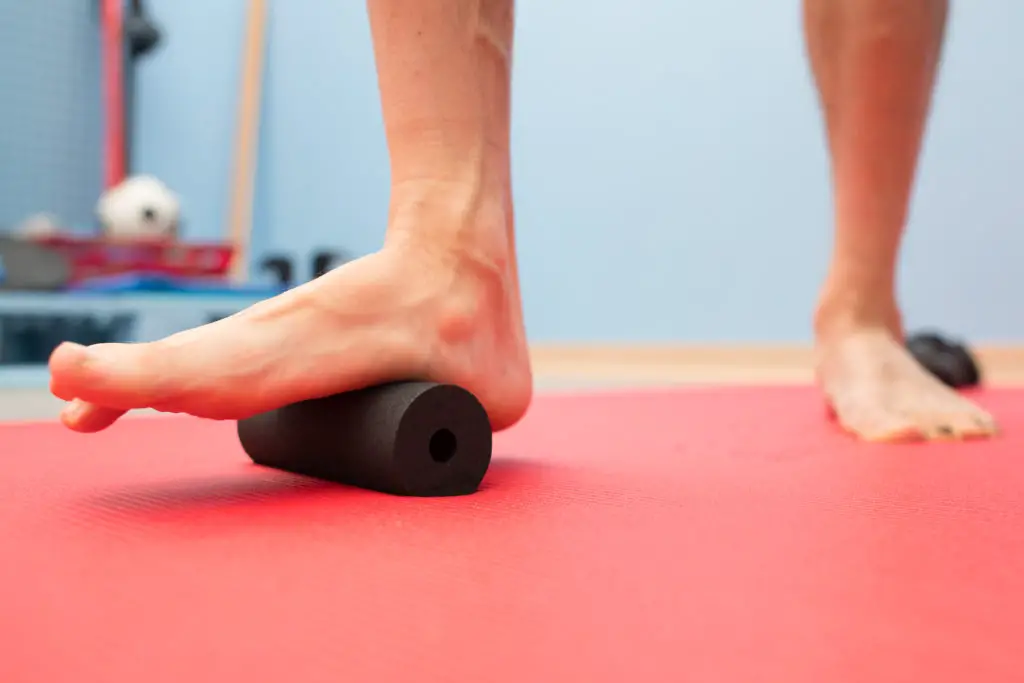
The benefits of foam rolling are endless and renowned by the fitness community. Boasting improvements in circulation, tension reduction, and more, foam rolling is considered one of the best things you can do for your body, both pre- and post-workout. However, is it really safe to do every single day?
You can foam roll every day but at risk of tiring out your muscles if you roll a specific area too much. You can also risk injury by rolling over bone instead of muscle, using the wrong type of foam roller, or foam rolling improperly.
In other words, it’s completely safe to use a foam roller every day, as long as you’re using a few best practices while you’re at it. If you’re interested in finding out more about the benefits of foam rolling and how to properly foam roll every day to avoid damaging tissue and secure all its great benefits, read on.
Page Contents
How to Foam Roll Every Day Properly

Even good things, when done in excess, can be detrimental to your body. And while it is safe to foam roll every day, it’s not safe to target a specific area in excess or do it while using the wrong form. Here’s everything you should know about how to foam roll every day safely.
Don’t Foam Roll for More Than 20 Minutes
Many people foam roll incorrectly by doing it for too long. You can’t put pressure on your muscles for extended periods in any capacity—they need ample time to heal afterward. Experts recommend trying to keep your foam rolling sessions under 20 minutes for the best effect.
Don’t Foam Roll a Muscle Group for More than 90 Seconds
Besides not spending more than 20 minutes foam rolling overall, you should also avoid spending more than 90 seconds foam rolling a specific muscle group at once.
If you need more work done on a specific area, take a 30-second break before starting up again to avoid further damaging your muscle tissue. Or, you can work on other muscle groups and circle your way back to the affected area.
Don’t Foam Roll Over Bones
When foam rolling your body, it’s important to make sure that you don’t foam roll over your body’s bony areas—only on muscle.
Foam rolling over bones is extremely bad for you. You can cause inflammation to the area by using the foam roller to push your skin into the bone, causing lasting damage to both the bone and skin.
Make sure you’re targeting a specific muscle group in the right way. If you notice while foam rolling you’re hitting a specific bone, adjust your position until you’re confident you’re only rolling out your muscle.
Ease Your Way into Using Hard Foam Rollers

If you’re a beginner to foam rolling, don’t immediately jump into the deep-tissue tough foam rollers. There are many different kinds of foam rollers, but it’s best to start with the softest, roundest ones if you’ve never done it before.
Deep-tissue types of foam rollers are best used by athletes and fitness fans who are already plenty used to high-intensity workouts. Trying to give yourself a deep tissue foam rolling massage right off the bat can do you more harm than good if your body has never experienced it before.
Try getting a regular, soft foam roller to start out with—this will be more than sufficient if you’re a beginner. If you notice that it doesn’t have the same effect that it used to over time, you can start working your way up to a tougher foam roller.
Note: If you’re interested in purchasing a foam roller for yourself, check out this deep tissue massager foam roller or this standard round foam roller on Amazon!
Never Try to Heal an Injury by Foam Rolling
Foam rolling is useful for dealing with muscle tension and increasing circulation, but not for treating a real injury. In most cases, doing so will only further increase the damage that’s been done to the area, as the area isn’t ready for such intense contact yet.
Visit a physical therapist or doctor to assess what you should do to improve your condition. Unless you have the explicit permission of your physical therapist or doctor to use a foam roller as a part of your at-home treatment regimen, avoid foam rolling your injuries altogether.
As long as you’re following the protocols mentioned above and taking the proper precautions, foam rolling every single day is a possibility for everyone.
If you’re a visual learner and are interested in a video showing how to properly foam roll your body, check out this great video by Adidas on YouTube:
Benefits of Proper Foam Rolling
Foam rolling your muscles has an incredible number of health benefits you can gain for yourself if you take this healing activity up—as long as it’s done correctly. Some of the most well-known benefits of foam rolling include:
- Preventing injury
- Increasing blood circulation and flow
- Reducing soft-tissue density
- Relaxing tight muscles
- Relieving muscle soreness
- Improve flexibility and range of motion
(Source: My Fitness Pal)
And to be honest, the list goes on. Clearly, foam rolling is an excellent way to both prep and heal your body—whether or not you work out. However, depending on whether you choose to foam roll before or after your workout, or just in general, it can have a different beneficial effect.
Foam Rolling Before a Workout
Foam rolling before you engage in a workout is a fantastic way to prep your body for the upcoming exercise session and improve your exercise performance while doing so.
Foam rolling does this by increasing your mobility by stimulating and warming up the muscles you’ll utilize during your workout. Many foam rolling fans find that foam rolling before a workout makes them “springier” and more prepared to face the challenge of their exercise.
Foam Rolling After a Workout
Foam rolling after a workout can help you prevent the all-too-common muscle soreness and tightness that follows the next day. Like many athletes, you can choose to incorporate your foam rolling activity into your cool-down routine.
By massaging your muscles and increasing blood flow to affected areas, you’re helping your body heal the muscles that worked so hard during your workout. High-intensity fitness fans often choose this time to foam roll to help their bodies recover after high levels of straining.
Foam Rolling for General Relief

Many of us are all-too-familiar with the muscle soreness and pain that comes with working at a laptop. Many of us splurge on massages to help with these effects, but foam rolling is a cost-effective and easy method to get similar results at home.
Slouching pushes our chest muscles and shoulders forward. Laying out on a foam roller helps to stretch these areas and train them to get back to where they were before, reducing tension and improving posture.
In Summary
Foam rolling offers many benefits to those who choose to try it out. As long as you’re making sure to foam roll in a healthy way, you can foam roll every single day without damaging your muscle or tissue. Avoid foam rolling for too long, make sure you’re only foam rolling muscle (not bone), work your way up to deep tissue foam rollers, and never try to foam roll an injury.
So what are you waiting for? Try foam rolling today to start taking advantage of its benefits!
